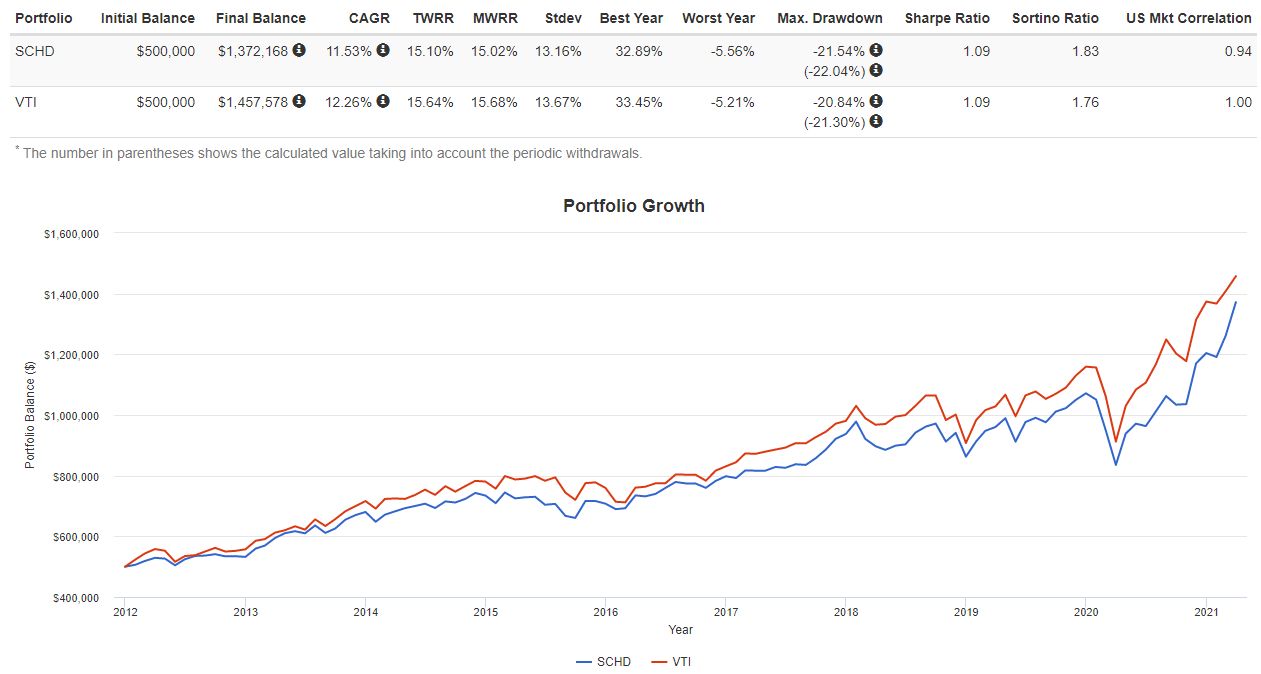Home>Finance>What Provides Visibility Across Inventory Levels Throughout The Entire Supply Chain Holistically?


Finance
What Provides Visibility Across Inventory Levels Throughout The Entire Supply Chain Holistically?
Published: October 19, 2023
Find out how finance solutions can provide comprehensive visibility across inventory levels throughout the entire supply chain, holistically. Improve efficiency and decision-making with advanced financial analytics.
(Many of the links in this article redirect to a specific reviewed product. Your purchase of these products through affiliate links helps to generate commission for LiveWell, at no extra cost. Learn more)
Table of Contents
- Introduction
- Understanding Inventory Visibility
- Importance of Inventory Visibility
- Challenges in Achieving Inventory Visibility
- Approaches to Achieving Inventory Visibility
- Technology Solutions for Inventory Visibility
- Benefits of Holistic Visibility in the Supply Chain
- Case Studies on Achieving Inventory Visibility
- Best Practices for Implementing Holistic Inventory Visibility
- Conclusion
Introduction
In today’s complex and rapidly evolving business landscape, maintaining efficient and optimized supply chain operations is crucial for success. One key factor in achieving this is having clear visibility across inventory levels throughout the entire supply chain. This holistic visibility allows businesses to accurately track and manage inventory, resulting in improved operational efficiency, reduced costs, and increased customer satisfaction.
Inventory visibility refers to the ability to see and monitor inventory levels at each stage of the supply chain, from raw materials to finished products. It encompasses real-time data on stock levels, locations, and movements, providing a comprehensive view of inventory across all channels, warehouses, and distribution centers.
The importance of inventory visibility cannot be overstated. Without it, businesses are at risk of stockouts, overstocking, delayed shipments, and errors in forecasting and planning. These challenges can lead to lost sales, increased carrying costs, lower profit margins, and dissatisfied customers.
However, achieving inventory visibility is not without its challenges. Supply chains are now more complex than ever, with multiple suppliers, distribution channels, and demand fluctuations. Information silos, legacy systems, and manual processes can hinder the flow of data and hinder visibility efforts.
In this article, we will explore the importance of inventory visibility and the challenges businesses face in achieving it. We will also discuss various approaches and technology solutions that can help improve inventory visibility and provide real-life case studies and best practices.
By the end of this article, you will have a deeper understanding of the benefits of holistic visibility in the supply chain and how to implement it effectively for your business.
Understanding Inventory Visibility
Inventory visibility is the ability to track and monitor the availability, location, and movement of inventory items at any given time within the supply chain. It involves capturing and analyzing real-time data on stock levels, stockouts, reorder points, lead times, and demand fluctuations. This visibility extends across various stages of the supply chain, including suppliers, manufacturers, warehouses, distribution centers, and retail outlets.
At its core, inventory visibility provides businesses with a comprehensive view of their inventory status, allowing them to make informed decisions regarding procurement, production, fulfillment, and distribution. It enables businesses to optimize inventory levels, ensure on-time deliveries, streamline production processes, minimize stockouts and overstocking, and enhance customer satisfaction.
There are two primary aspects of inventory visibility: internal visibility and external visibility. Internal visibility refers to the visibility within a single organization, enabling different departments and stakeholders to access real-time data on inventory levels, locations, and movements. This internal visibility is essential for effective inventory management, planning, and decision-making.
External visibility, on the other hand, extends beyond the boundaries of a single organization. It involves sharing inventory information with external partners, such as suppliers, manufacturers, distributors, and retailers, in order to coordinate and synchronize inventory activities. This collaborative visibility promotes better demand forecasting, coordination of production and distribution, and efficient order fulfillment.
Real-time data integration plays a crucial role in achieving inventory visibility. It involves capturing data from various sources, such as point-of-sale systems, warehouse management systems, production systems, and e-commerce platforms, and consolidating it into a single, unified view. With this centralized and synchronized data, businesses can gain insights into inventory levels and trends, identify potential bottlenecks, and make data-driven decisions to optimize inventory operations.
Furthermore, inventory visibility can be enhanced through the use of technologies such as barcode scanning, RFID (Radio Frequency Identification), IoT (Internet of Things), and cloud-based inventory management systems. These technologies enable accurate and automated data capture, real-time tracking of inventory movements, and seamless data sharing across the supply chain partners.
In the next section, we will explore the importance of inventory visibility and the benefits it brings to businesses in the supply chain.
Importance of Inventory Visibility
Inventory visibility is a critical aspect of supply chain management, and its importance cannot be overstated. Here are some key reasons why inventory visibility is crucial for businesses:
- Optimized Inventory Levels: With accurate and real-time visibility into inventory levels, businesses can avoid stockouts and overstocking situations. This allows for better inventory planning, improved demand forecasting, and optimized reorder points. By having the right amount of inventory at the right time, businesses can reduce carrying costs, minimize the risk of excess inventory, and improve overall operational efficiency.
- Enhanced Customer Satisfaction: Inventory visibility enables businesses to fulfill customer orders promptly and accurately. It ensures that businesses have the necessary products in stock to meet customer demand and avoid disappointing customers with backorders or delayed shipments. Improved order fulfillment leads to increased customer satisfaction and loyalty.
- Reduced Costs: Efficient inventory management through visibility can result in cost savings. By avoiding stockouts, businesses eliminate the need for expedited shipping or emergency purchases, which often come at a higher cost. Additionally, by reducing excess inventory, businesses can free up capital tied up in inventory and minimize storage costs.
- Streamlined Production and Logistics: Inventory visibility allows businesses to streamline production processes and logistics. By having accurate data on inventory levels, businesses can effectively plan production schedules, allocate resources, and coordinate with suppliers and distributors. This minimizes bottlenecks, reduces lead times, and improves overall supply chain efficiency.
- Improved Collaboration: Inventory visibility facilitates better collaboration and communication between different parties in the supply chain. Suppliers, manufacturers, distributors, and retailers can share real-time inventory data, enabling them to work together effectively and make informed decisions. This collaborative approach promotes efficient order fulfillment, reduces the risk of stockouts, and enhances overall supply chain performance.
In summary, inventory visibility is crucial for businesses to optimize inventory levels, meet customer demands, reduce costs, streamline operations, and foster collaboration within the supply chain. It is a key driver of operational efficiency and can provide a competitive advantage in today’s dynamic business environment.
In the next section, we will discuss the challenges businesses face in achieving inventory visibility and how they can overcome them.
Challenges in Achieving Inventory Visibility
While inventory visibility offers numerous benefits, businesses often face challenges when it comes to achieving it. Here are some common challenges associated with inventory visibility:
- Data Silos: Many organizations have disparate systems and databases that store inventory information, leading to data silos. This makes it difficult to have a comprehensive view of inventory across the supply chain. Integrating data from multiple systems and ensuring data accuracy can be a complex task.
- Legacy Systems: Legacy systems that are not designed for real-time data sharing and integration can hinder inventory visibility efforts. Outdated technology may lack the necessary capabilities for seamless data synchronization, making it challenging to track inventory movements accurately.
- Manual Processes: Reliance on manual processes, such as manual data entry and paper-based record keeping, adds complexity and increases the risk of errors. Manual processes are time-consuming, prone to mistakes, and offer limited visibility into inventory levels, particularly in fast-paced supply chain environments.
- Complex Supply Chains: Supply chains today are increasingly complex, involving multiple suppliers, manufacturers, distributors, and retailers. Each participant may use different systems and processes, making it challenging to achieve seamless visibility. Coordinating and synchronizing inventory information across different entities can be a significant hurdle.
- Demand Variability: Fluctuations in consumer demand can impact inventory levels and make it challenging to maintain accurate visibility. Sudden spikes or drops in demand can lead to imbalances in inventory, resulting in overstocking or stockouts.
- Lack of Communication and Collaboration: Poor communication and collaboration among supply chain partners can hinder inventory visibility. When there is a lack of shared information and coordination, it becomes difficult to track inventory movement and accurately forecast demand.
To address these challenges and achieve inventory visibility, businesses can adopt various approaches and leverage technology solutions. The next section will explore these strategies in more detail.
Approaches to Achieving Inventory Visibility
To overcome the challenges in achieving inventory visibility, businesses can adopt several approaches. Here are some effective strategies to consider:
- Centralized Inventory Management: Adopting a centralized inventory management system is crucial for achieving visibility. By consolidating and integrating inventory data from various sources into a single platform, businesses can gain a comprehensive view of inventory across the entire supply chain. This centralization enables real-time tracking, accurate data analysis, and effective decision-making.
- Data Integration and Sharing: Implementing systems and processes that enable seamless data integration and sharing is essential. Integrating systems such as enterprise resource planning (ERP), warehouse management systems (WMS), and point-of-sale (POS) systems ensures that inventory information is synchronized across the supply chain. This integration allows stakeholders to access real-time data and make more informed decisions.
- Collaborative Planning: Establishing collaborative planning processes with suppliers, manufacturers, distributors, and retailers is key to achieving visibility. By sharing demand forecasts, production plans, and inventory data, all participants can coordinate their activities and optimize inventory levels throughout the supply chain. This collaboration helps reduce delays, minimize stockouts, and improve overall supply chain performance.
- Real-Time Tracking Technologies: Leveraging technologies such as barcode scanning, RFID, and IoT can provide real-time visibility into inventory movements. These technologies enable accurate and automated data capture, allowing businesses to track inventory in real-time. By having up-to-date information on inventory location and status, businesses can enhance visibility and respond quickly to changes in demand.
- Data Analytics and Predictive Modeling: Utilizing data analytics tools and predictive modeling can help businesses gain insights from inventory data. By analyzing historical and real-time data, businesses can identify trends, forecast demand more accurately, and optimize inventory levels. Predictive modeling can also help in improving forecasting accuracy and proactive decision-making.
- Continuous Monitoring and Reporting: Implementing continuous monitoring and reporting mechanisms ensures that inventory visibility is maintained consistently. Regular monitoring of inventory levels, movement, and performance metrics allows businesses to identify any issues or discrepancies and take corrective actions promptly. Measuring and reporting key performance indicators related to inventory can help drive continuous improvement.
By adopting these approaches, businesses can overcome the challenges associated with inventory visibility and achieve a comprehensive view of their inventory across the supply chain. In the next section, we will discuss technology solutions specifically designed to enhance inventory visibility.
Technology Solutions for Inventory Visibility
Technology plays a vital role in achieving inventory visibility by providing the necessary tools to capture, analyze, and share real-time inventory data. Here are some technology solutions that businesses can leverage to enhance inventory visibility:
- Inventory Management Systems: Implementing cloud-based inventory management systems allows businesses to centralize inventory data and gain real-time visibility across the supply chain. These systems provide functionalities such as inventory tracking, demand forecasting, order management, and reporting, enabling businesses to optimize inventory levels and streamline operations.
- Barcode Scanning and RFID: Barcode scanning and RFID (Radio Frequency Identification) technologies enable businesses to track inventory movements accurately. By scanning barcodes or using RFID tags, businesses can capture real-time data on inventory location, quantities, and timestamps. This data is then synchronized with inventory management systems, providing real-time visibility to stakeholders.
- Internet of Things (IoT): IoT devices, such as sensors and connected devices, can be used to monitor and track inventory in real-time. These devices communicate with each other and with inventory management systems, capturing data on inventory levels, temperature, humidity, and other relevant parameters. This real-time data helps businesses to make informed decisions and take proactive actions.
- Artificial Intelligence (AI) and Machine Learning (ML): AI and ML technologies can analyze vast amounts of inventory data to identify patterns, trends, and anomalies. These technologies can enable predictive analytics, forecasting future demand, optimizing inventory levels, and automating replenishment processes. AI and ML can also help in detecting potential issues and suggesting mitigation strategies, improving overall inventory visibility.
- Cloud Computing: Cloud-based solutions offer scalability, flexibility, and accessibility, making them ideal for achieving inventory visibility. Cloud platforms provide a centralized repository for inventory data, allowing stakeholders to access up-to-date information from anywhere at any time. Cloud-based systems also facilitate easy integration with other systems and enable real-time collaboration among supply chain partners.
- Data Analytics and Visualization: Utilizing data analytics and visualization tools helps businesses gain insights from inventory data. These tools can analyze historical data, identify trends, generate meaningful reports, and provide visual representations of inventory metrics. This enhances decision-making and allows businesses to proactively manage inventory levels and mitigate risks.
By leveraging these technology solutions, businesses can significantly enhance their inventory visibility. However, it is essential to select the appropriate technologies that align with the organization’s requirements and integrate them seamlessly into existing systems and processes.
In the next section, we will explore the benefits of holistic visibility in the supply chain and provide real-life case studies that showcase successful implementation.
Benefits of Holistic Visibility in the Supply Chain
Holistic visibility in the supply chain brings numerous benefits for businesses. By having a comprehensive view of inventory levels and movements across the entire supply chain, businesses can optimize operations, improve customer satisfaction, and drive overall performance. Here are some key benefits of achieving holistic visibility:
- Improved Inventory Management: Holistic visibility allows businesses to have better control over their inventory. They can accurately track inventory levels, monitor stock movements, and identify any discrepancies or inefficiencies. This leads to optimized inventory levels, reduced carrying costs, and minimized stockouts or overstocking situations.
- Enhanced Supply Chain Responsiveness: With holistic visibility, businesses can quickly respond to changes in demand or supply. They can make timely decisions regarding procurement, production, and distribution to meet customer expectations and avoid disruptions. This agility in responding to market dynamics improves supply chain responsiveness and overall customer service.
- Optimized Order Fulfillment: Holistic visibility enables businesses to fulfill customer orders more efficiently. With accurate information on inventory availability and location, businesses can allocate stock appropriately and ensure on-time deliveries. This leads to improved customer satisfaction, reduced backorders, and increased order fulfillment rates.
- Better Collaboration: Holistic visibility promotes collaboration and communication between supply chain partners. By sharing real-time inventory information, suppliers, manufacturers, and retailers can work together to coordinate production, streamline distribution, and align their activities. This collaborative approach enhances overall supply chain performance and fosters stronger partnerships.
- Increased Efficiency and Cost Savings: Holistic visibility allows businesses to optimize processes and reduce inefficiencies. By streamlining inventory management, eliminating stockouts, and minimizing excess inventory, businesses can optimize resource allocation and reduce costs. Improved supply chain efficiency leads to cost savings and better utilization of available resources.
- Greater Forecasting Accuracy: With holistic visibility, businesses can access accurate and real-time data on inventory levels and demand patterns. This leads to better forecasting accuracy, enabling businesses to plan production, procurement, and distribution more effectively. Accurate forecasts reduce the risk of overstocking and stockouts, resulting in improved inventory planning and reduced costs.
In summary, achieving holistic visibility in the supply chain brings a range of benefits, including improved inventory management, enhanced responsiveness, optimized order fulfillment, better collaboration, increased efficiency, cost savings, and improved forecasting accuracy. Organizations that invest in achieving holistic visibility can gain a competitive advantage and drive overall business success.
Now let’s explore real-life case studies that demonstrate successful implementations of holistic inventory visibility in the supply chain.
Case Studies on Achieving Inventory Visibility
Several companies have successfully implemented solutions to achieve holistic inventory visibility in their supply chain operations. Let’s take a look at two notable case studies:
Case Study 1: Walmart
Walmart, one of the largest retail chains in the world, implemented a sophisticated inventory visibility system to improve operational efficiency and customer satisfaction. By integrating its suppliers, distribution centers, and stores through a centralized inventory management system, Walmart gained real-time visibility into its inventory levels.
Through this system, Walmart can track inventory movements from the suppliers to the distribution centers and stores. The system also automatically generates stock replenishment orders based on predefined inventory thresholds, ensuring that products are consistently available on the shelves for customers.
This holistic inventory visibility has enabled Walmart to optimize its inventory levels, reduce stockouts, and improve overall supply chain efficiency. By having accurate and up-to-date inventory information, Walmart has been able to respond quickly to changes in demand and improve order fulfillment rates, resulting in higher customer satisfaction.
Case Study 2: Amazon
As a global e-commerce giant, Amazon relies heavily on inventory visibility to deliver a seamless customer experience. Amazon implemented advanced inventory management systems and utilized technologies like barcode scanning and robotic automation in its warehouses.
With these systems and technologies, Amazon can accurately track inventory levels, monitor stock movements, and predict demand. Real-time inventory data guides Amazon’s sophisticated order fulfillment processes, ensuring products are shipped promptly to customers.
The holistic inventory visibility in Amazon’s supply chain has allowed the company to efficiently manage its vast inventory across multiple warehouses. The ability to track inventory in real-time has minimized stockouts, reduced excess inventory, and improved order fulfillment times, resulting in enhanced customer satisfaction.
These case studies demonstrate how companies like Walmart and Amazon have leveraged inventory visibility to drive operational efficiency, improve customer satisfaction, and gain a competitive edge in the market.
In the next section, we will discuss best practices for implementing holistic inventory visibility in the supply chain.
Best Practices for Implementing Holistic Inventory Visibility
Implementing holistic inventory visibility in the supply chain requires careful planning and execution. Here are some best practices to consider when aiming to achieve comprehensive visibility:
- Establish Clear Objectives: Clearly define the objectives you want to achieve with inventory visibility. Determine the key performance indicators (KPIs) you will use to measure success, such as inventory turnover, order fulfillment rates, and customer satisfaction.
- Collaborate with Supply Chain Partners: Foster collaboration and open communication with suppliers, manufacturers, distributors, and retailers. Establish a shared understanding of the importance of inventory visibility and work together to align processes and data sharing mechanisms.
- Select the Right Technology Solutions: Choose technology solutions that align with your business needs and goals. Evaluate inventory management systems, tracking technologies, and data analytics tools to ensure they can effectively integrate with your existing systems and provide the necessary functionality.
- Ensure Data Accuracy and Integration: Implement data integration mechanisms to ensure all systems across the supply chain can exchange accurate and real-time data. Implement data validation processes and standardize data formats to avoid discrepancies and errors.
- Invest in Training and Change Management: Provide employees with training on the new systems and processes related to inventory visibility. Empower them to embrace the changes and encourage a culture of continuous improvement and innovation.
- Start with Pilot Projects: Begin with smaller-scale pilot projects to test the effectiveness of the chosen technology solutions and processes. Evaluate their impact on inventory visibility and refine the implementation strategy before scaling up.
- Monitor and Measure Performance: Continuously monitor and measure the performance of your inventory visibility initiatives. Review the established KPIs regularly and identify areas for improvement. Use data analytics to gain insights and make data-driven decisions to further optimize inventory operations.
- Regularly Update and Adapt: The supply chain landscape is ever-evolving, and business needs change over time. Regularly review and update your inventory visibility strategies to ensure they remain aligned with your business objectives and adapt to new technologies and industry trends.
By following these best practices, businesses can effectively implement holistic inventory visibility and reap its benefits. It is essential to approach inventory visibility as an ongoing journey rather than a one-time project, continuously striving for improvement and adopting emerging technologies and practices.
In the concluding section, we will summarize the key points discussed and emphasize the importance of holistic inventory visibility in the supply chain.
Conclusion
Holistic inventory visibility is a critical component of supply chain management, enabling businesses to track and monitor inventory levels throughout the entire supply chain. It offers a range of benefits, including optimized inventory management, enhanced customer satisfaction, reduced costs, streamlined operations, and improved collaboration. However, achieving inventory visibility comes with its challenges, such as data silos, legacy systems, and complex supply chains.
Implementing inventory visibility requires a strategic approach, leveraging technology solutions, and adopting best practices. Centralized inventory management systems, barcode scanning, RFID, IoT, AI, and cloud computing are among the technology solutions that can enhance visibility. Collaborating with supply chain partners, ensuring data accuracy and integration, and investing in training and change management are crucial considerations for successful implementation.
Real-life case studies of companies such as Walmart and Amazon showcase the positive impact of holistic inventory visibility on operational efficiency, customer satisfaction, and overall supply chain performance. These success stories highlight the importance of implementing effective inventory visibility strategies and leveraging technology to gain a competitive edge in the market.
In conclusion, achieving holistic inventory visibility is essential for businesses aiming to optimize operations, reduce costs, and meet customer demands in today’s dynamic business environment. By implementing the best practices outlined in this article and leveraging technology solutions, businesses can gain a comprehensive view of their inventory, streamline supply chain processes, and drive overall business success.














